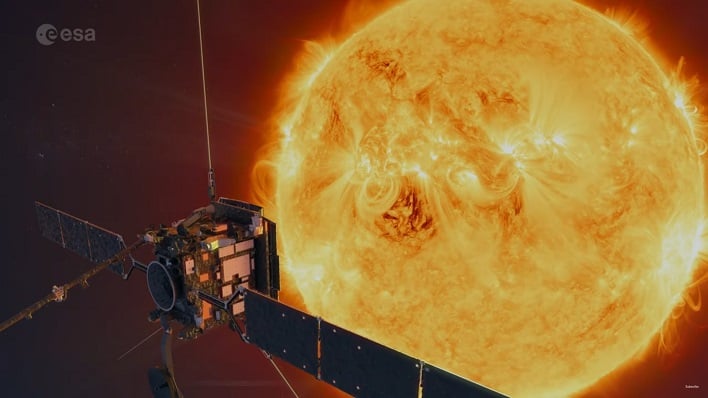NASA And ESA Team Up For Spacecraft Gymnastics To Solve An Old Mystery Of Our Sun

The Sun's corona is comprised of electrically charged gas known as plasma. Scientists have pondered that there must be another method for transferring energy into the plasma that makes up the Sun's atmosphere, but have not been able to answer what it might be conclusively. One thought is that turbulence in the solar atmosphere could increase plasma heating in the corona. However, solar physicists have not been able to test the theory due to needing more than one spacecraft. Enter the Parker Solar Probe and Solar Orbiter.
One spacecraft was required to perform remote sensing, while the other performed in situ measurements to pull off the testing that needed to be done. Remote sensing required ESA's Solar Orbiter to be positioned at a certain distance from the Sun and utilize cameras to capture images of its atmosphere in different wavelengths. The in-situ measurements required NASA's Parker Solar Probe to fly through the region that needed to be investigated while taking measurements of the particles and magnetic fields in that particular part of space.
The tricky part of the process is that the Parker Solar Probe needed to be within the field of view of one of the Solar Orbiter's instruments. This would allow Solar Orbiter to "record the large-scale consequences of what Parker Solar Probe was measuring in situ." This meant the timing was everything, and that time was found to be occurring on June 1, 2022, when the two spacecraft would be in the correct orbital configuration. Well, almost correctly, as the Parker Solar Probe would still be slightly out of the field of view of the Metis instrument onboard the Solar Orbiter.
To overcome this, the teams needed to have the spacecraft perform "a little bit of gymnastics" with the Solar Orbiter. The spacecraft needed to make a 45-degree roll and then point slightly away from the Sun.
The routine was pulled off, as the roll and offset pointing of Solar Orbiter coincided with the Parker Solar Probe coming into its view. At that point, the two spacecraft captured the first-ever simultaneous measurements of the solar corona's large-scale configuration and the plasma's microphysical properties.
"This work is the result of contributions from many, many people," remarked Daniele Telloni, part of the team behind Solar Orbiter's Metis instrument.
The researchers could compare the new results to the theoretical predictions solar physicists have made. The data showed that the specific way the turbulence was transferring energy is similar to "what happens when you stir your morning cup of coffee."
ESA explained, "By stimulating random movements of a fluid, either a gas or a liquid, energy is transferred to ever smaller scales, which culminates in the transformation of energy into heat. In the case of the solar corona, the fluid is also magnetized, so stored magnetic energy is also available to be converted into heat."
The researchers admit more work needs to be done before the problem is solved. However, Daniel Muller, Project Scientist, remarked, "This is a scientific first. This work represents a significant step forward in solving the coronal heating problem."


